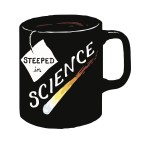The history of science is full of us discovering new ways to view and interact with the world around us. I’m fascinated with how the world around us affects us and how we affect it. Imagine the astonishment of the first person who built a microscope and viewed a drop of water through it. An entire world we never knew! At the other end of the size scale, we are literally discovering new worlds, planets circling other stars, using various kinds of telescopes.
We’ve discovered more than just the big and the small. We’ve found that the light we see is just one small part of the electromagnetic spectrum, an array of kinds of radiations that do all kinds of things. At the low-energy end, there are radio waves, TV waves, wi-fi and cell phone waves (these are all essentially the same thing). At the other end, nuclear radiation. Looking at the world through an infrared camera can show us heat sources, and we’ve found other ways of picking up other kinds of radiation, each showing us a different picture of the same scene. Where are the visible objects? The warm objects (mammals and birds would stand out against the trees in my forest setting)? The ones with electronic signals or radiation? (Lots of things give off nuclear radiation. Our sweat does, since potassium is a weakly radioactive element. I once needed a quick radioactive source to calibrate an experiment, so I ran up and down the stairs several times and wiped my sweat onto the slide and stuck it in my machine. It worked great.)
We have also worked on seeing through things. We use MRIs and X-rays to figure out what’s wrong with out bodies without cutting into them. We look for tiny details that are invisible to the naked eye and have computers that search for patterns. We have learned to use satellite photos to search for archeology sites and computers algorithms using standard video to pick up the tiniest movements.
All these ways of seeing allow us to study the world around us and to interact with it in new ways. How can we produce and use energy more efficiently? What technologies can we steal from nature? What do other species teach us about survival? They also allow us to study ourselves. What do the tiny movements in our face give away about what we are feeling? What do the microbes we leave behind whenever we touch something say about us?
In this blog, I explore what we’re learning about the world around us with science and technology, new and not-so-new. I’m curious about many things and in awe of the details of our world. I like to share amazing things.[/vc_column_text][/vc_column][/vc_row]


Leave a Comment
You must be logged in to post a comment.